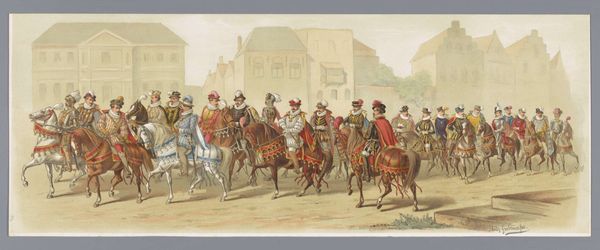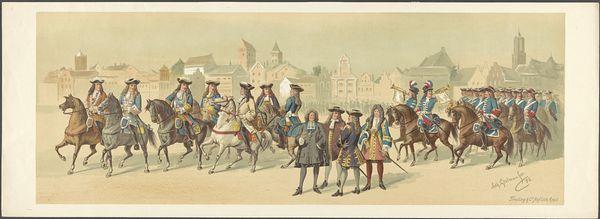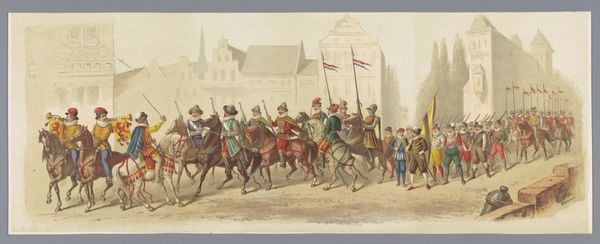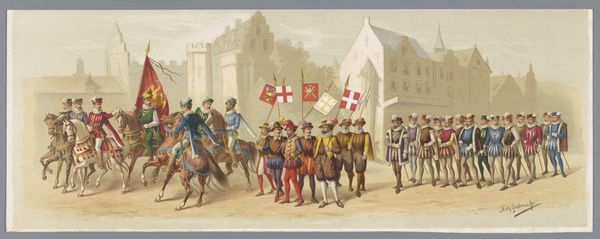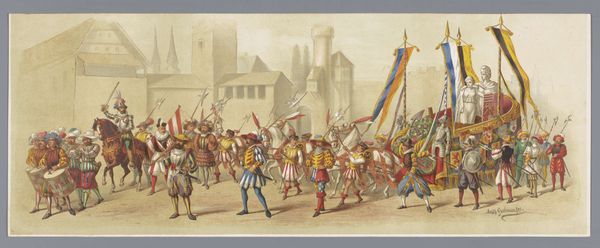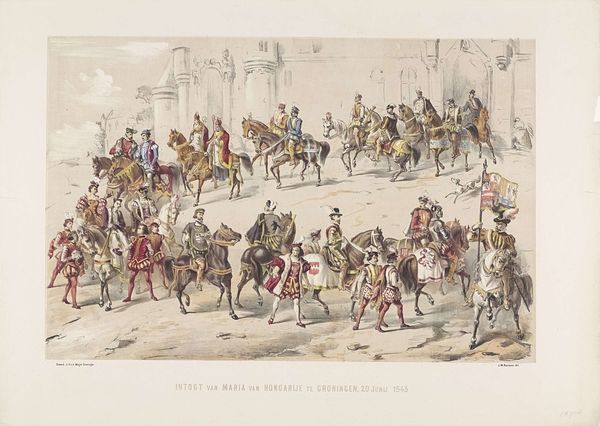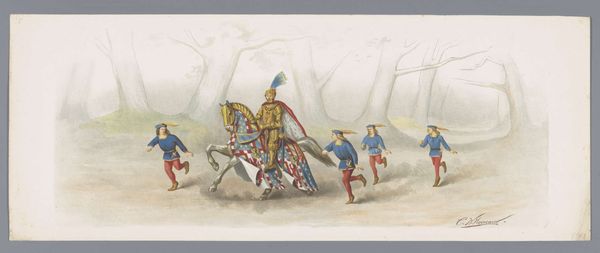
print, watercolor
#
water colours
# print
#
watercolor
#
watercolour illustration
#
genre-painting
#
history-painting
#
watercolor
Dimensions: height 300 mm, width 785 mm
Copyright: Rijks Museum: Open Domain
Curator: What a captivating tableau. This watercolor print, dating back to 1881, is entitled "Utrechtse Maskerade van 1881 (eerste plaat)". The identity of the artist remains a mystery to us. What are your immediate impressions? Editor: My first thought is processional. It feels meticulously staged, like a very self-conscious performance of power and history, even though the tones are almost muted and faded. Curator: That's a great point about the faded tones, as the symbolic use of colour during that time carried so much meaning. Do you think the paler palette tones down the statement? Editor: I think so. But I wonder, faded for whom? Consider how this maskerade presents a romanticized past. The meticulous uniforms, the civic architecture in the background… Who is being included, and perhaps more importantly, who is being excluded from this historical narrative? Is this simply civic pride on display or a deliberate political assertion? Curator: That's astute. Thinking of it as a political assertion, these figures might serve as symbols that anchor viewers to particular values and beliefs. Editor: Precisely! It's not just about colourful costumes or a historical parade. It’s about establishing a continuity and celebrating the historical status quo. What is your view about that big building to the left? Does it represent temporal authority? Curator: Given the architectural grandeur, I am led to believe it probably does. Buildings such as this act as constant reminders. A physical assertion that permeates one's consciousness simply by passing by. It could function as an immutable backdrop that contextualizes such historical celebrations like this masked parade. Editor: So, we see these carefully positioned symbols being layered into both the physical landscape of Utrecht and the historical memory of its people. An act of curation in itself, really, in every sense. Curator: Indeed, whether intended as an earnest representation or a conscious work of cultural messaging, either interpretation can spark powerful dialogues about history, power, and representation, centuries on. Editor: Exactly, and hopefully that is exactly what it did here.
Comments
No comments
Be the first to comment and join the conversation on the ultimate creative platform.
